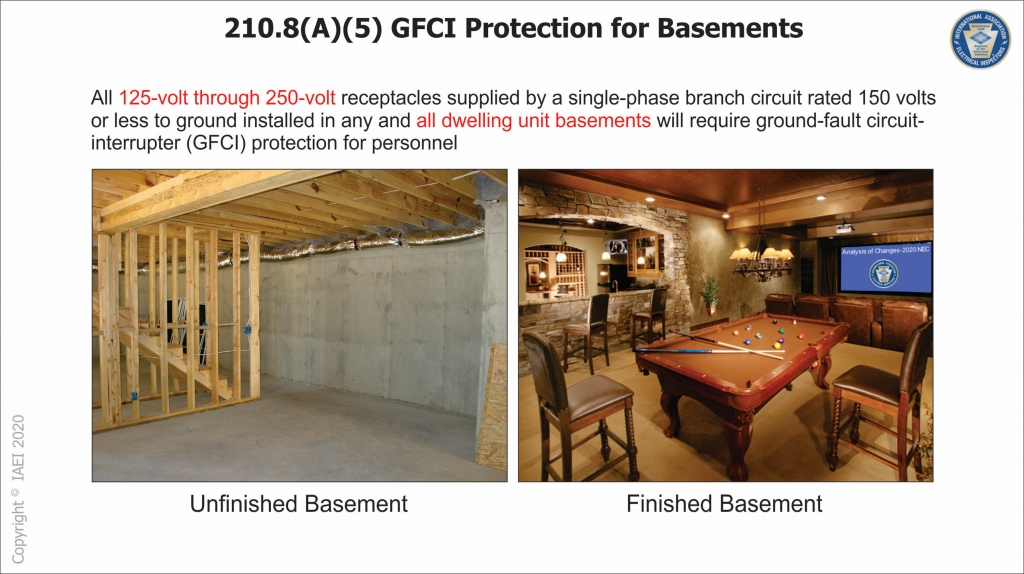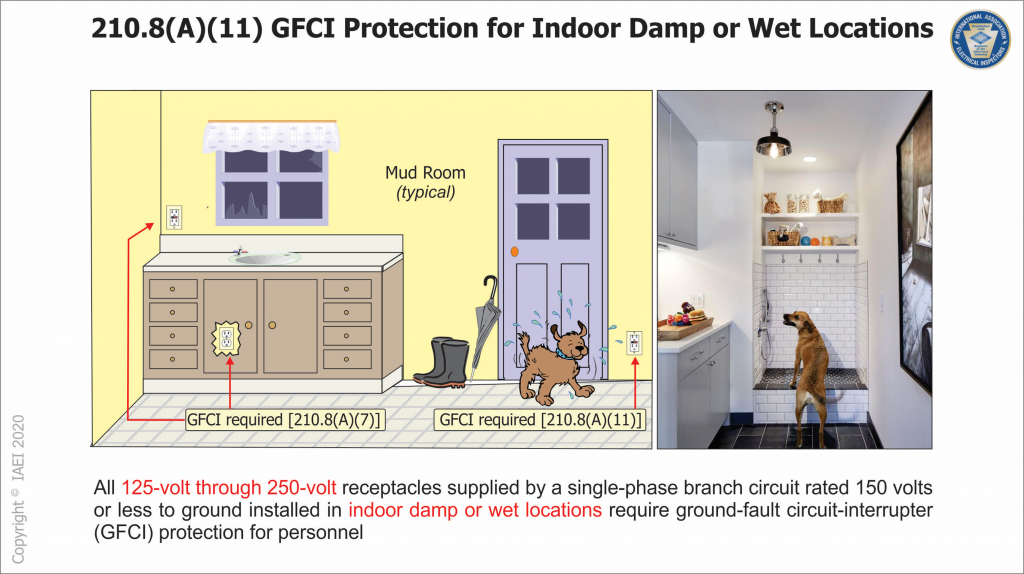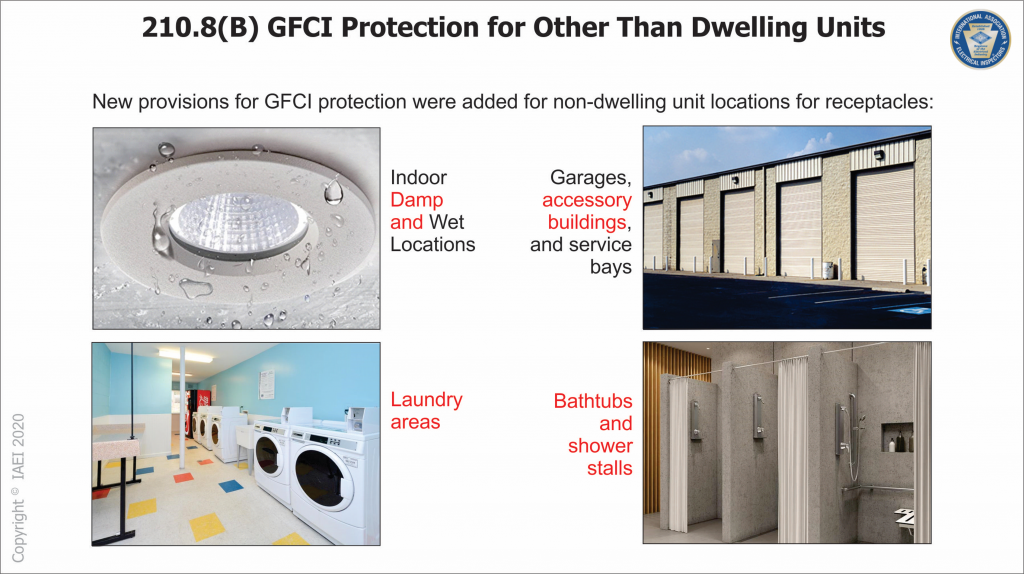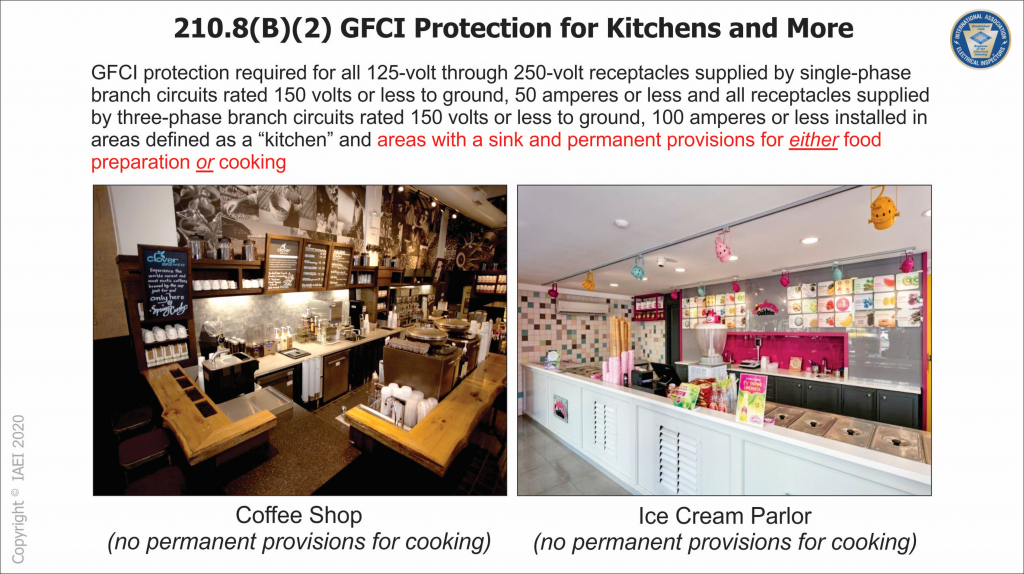Requirements for GCFI receptacles are expanded to areas that are prone to moisture or contain conductive surfaces
Definitions
GCFI: Stands for Ground-Fault Circuit-Interrupter. When there is an unbalanced current as a result of one of the conductors coming into contact with a grounded object (such as through a person’s body), the receptacle automatically shuts off.
Dwelling Unit: A single unit, providing complete and independent living facilities for one or more persons, including permanent provisions for living, sleeping, cooking and sanitation.
The Code: Section 210.8 (A) and (B)
(A) Dwelling Units
All 125-volt through 250-volt receptacles installed in the locations specified in 210.8(A)(1) through (A)(11) and supplied by a single-phase branch circuits rated 150 volts or less to ground shall have ground-fault circuit-interrupter protection for personnel.
- Bathrooms
- Garages and also accessory buildings that have a floor located at or below grade level not intended as habitable rooms and limited to storage areas, work areas, and areas of similar use
- Outdoors
- Crawl spaces – at or below grade level
- Basements
- Receptacles installed under the exception to 210.8(A)(5) shall not be considered as meeting the requirements of 210.52(G)
- Kitchens – where the receptacles are installed to serve the countertop surfaces
- Sinks – where receptacles are installed within 1.8 m (6 ft) from the top inside edge of the bowl of the sink
- Boathouses
- Bathtubs or shower stalls – where receptacles are installed 1.8 m (6 ft) of the outside edge of the bathtub or shower stall
- Laundry areas
- Indoor damp and wet locations
(B) Other than Dwelling Units
All 125-volt through 250-volt receptacles supplied by a single-phase branch circuits rated 150 volts or less to ground, 50 amperes or less, and all receptacles supplied by three-phase branch circuits rated 150 volts or less to ground, 100 amperes or less, installed in the locations specified in 210.8(B)(1) through (B)(12) shall have ground-fault circuit-interrupter protection for personnel.
- Bathrooms
- Kitchens or areas with a sink and permanent provisions for either food preparation or cooking
- Rooftops
- Outdoors
- Sinks – where receptacles are installed within 1.8 m (6 ft) from the top inside edge of the bowl of the sink
- Indoor damp and wet locations
- Locker rooms with associated showering facilities
- Garages, accessory buildings, service bays, and similar areas other than vehicle exhibition halls and showrooms
- Crawl spaces – at or below grade level
- Unfinished areas of basements
- Laundry Areas
- Bathtubs and shower stalls – where receptacles are installed 1.8 m (6 ft) of the outside edge of the bathtub or shower stall




Commentary
GFCI is now required for ALL dwelling unit basements regardless of whether or not its finished due to the existence of conductive surfaces and the prevalence of moisture in basement areas
GCFI is now required in areas that get frequent moisture such as Mud Rooms, regardless of whether there are explicit water sources. This is true for both Dwelling and Non-Dwelling Units
Accessory buildings such as garages or service bays have the same degree of shock hazard and deserve the same level of GCFI protection
Additional language was added to 210.8(B) to clarify that areas not defined as a kitchen, but had a sink and permanent food preparation/cooking fixtures have the same potential for shock hazards as kitchens
- Examples
- Ice cream parlors
- Coffee shops
- Smoothie stores


Recent Comments